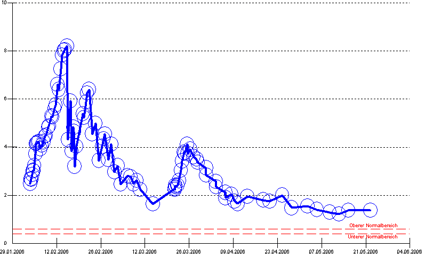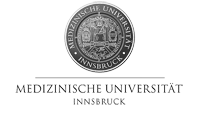|
|
 |
1Department of Paediatric University Innsbruck, 2UK Heidelberg, 3HKI Jena, 4Department of Hygiene, Microbiology and Social Medicine Innsbruck
In February 2006 a 7 10/12 year old girl showed symptoms of icterus, nausea, abdominal pain and oliguria. Furthermore she had no appetite and her general condition was reduced. The blood analysis showed the signs of a haemolytic anaemia with a haemoglobin from 6.1 g/l and an increased LDH from 1370 U/l.

Fig. 1: The red scantling shows the therapy with plasmainfusion and the black scantling shows the plasmapheresis (80-100 ml/kg/week).
In the week before diagnosis she had an acute respiratory disease but no gastroenteritis was described.
She was treated with dialysis and plasmapheresis (Octaplas) and furthermore she required six packed RBC and one platelets infusion for catheter implantation. Secondary she needed three different antihypertensive drugs to treat her severe arterial hypertension.
The complement analysis showed interesting results: the little girl has no factor H related protein 1 and the complement factor C3d is increased. Now she gets twice a week a plasmapheresis. Her condition is satisfactory but it shows no recovery. So what is the best therapy for this little girl?
The therapy of patients with D--HUS is empiric with plasma substitution during active disease and for prophylaxis. However, many patients progress to ESRD despite continuous plasma therapy. If patients with FHR1 disorder differ from other underlying diseases is presently unclear.
To improve outcome and survival of these patients it is necessary to encourage new therapeutic studies based on the ESPN HUS registry (http://espn.uwcm.ac.uk).
Supported by ESPN, APN and Medical University Innsbruck
